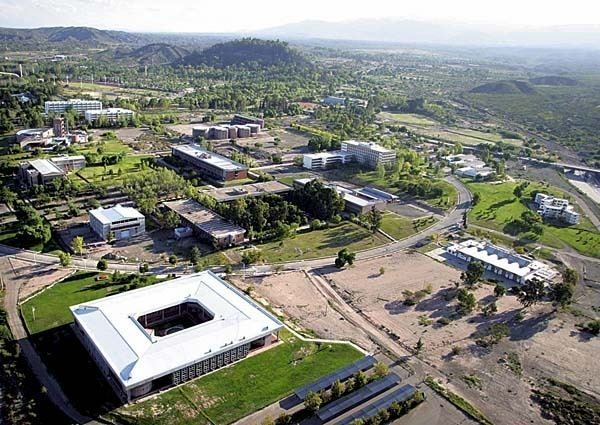Vice-rector Ing. Jorge Barón Founded 1939 | Rector Ing. Agr. Daniel Pizzi Academic staff 4,071 Phone +54 261 413-5000 Number of students 44,160 | |
 | ||
Motto in English Life is in the wingbeat of the spirit Established 1939; 78 years ago (1939) Notable alumni Enrique Dussel, Arturo Andrés Roig, José Luis Gioja, Carlos Alonso, Celso Jaque Similar Universidad de Mendoza, National University of Cordoba, Balseiro Institute, National University of San Ju, University of Buenos Aires | ||
The National University of Cuyo (Spanish: Universidad Nacional de Cuyo, UNCuyo) is the largest center of higher education in the province of Mendoza, Argentina.
Contents
- History
- School of Engineering
- Graduate
- Balseiro Institute San Carlos de Bariloche Ro Negro
- School of Arts and Plastic Design
- School of Economic Sciences
- School of Exact and Natural Sciences
- School of Medicine
- School of Social and Political Sciences
- School of Law
- School of Humanities
- School of Dentistry
- Elementary and Special Needs Education
- School of Agricultural Sciences
- Applied Sciences San Rafael Mendoza
- Recent research
- References
As of 2005, the university had 12 academic schools in the city of Mendoza and a delegation in the city of San Rafael (province of Mendoza), in addition to the Balseiro Institute, which is the most developed institute of Physics research in Argentina, located in the city of San Carlos de Bariloche (province of Río Negro). It includes the University Technological Institute which offers technical education in four other cities in Mendoza province. Moreover, UNCuyo is also devoted to improving education due to having 7 other buildings working as High Schools:
History
The UNCuyo was established on March 21, 1939 by the presidential decree 26971. The university was established to offer tertiary education provision in the region of Cuyo (the provinces of Mendoza, San Juan and San Luis). At its foundation the university was composed of some existing higher education colleges, and new ones were incorporated. Regional affiliations were established in Human Sciences, Medicine, Agronomy and Economics in Mendoza, Engineering and Architecture in San Juan, and Natural Sciences in San Luis. These links remained in place until 1973. That year the National University of San Juan and the National University of San Luis were established from the adjunct faculties of the National University of Cuyo already in these regions. Thereafter, the National University of Cuyo concentrated itself in Mendoza, in addition to a campus in Río Negro Province: the Balseiro Institute.
School of Engineering
Graduate
Balseiro Institute (San Carlos de Bariloche, Río Negro)
Graduate
School of Arts and Plastic Design
School of Economic Sciences
Graduate
There are many others. For further information please visit: http://www.fce.uncu.edu.ar/paginas/index/cursos
School of Exact and Natural Sciences
School of Medicine
School of Social and Political Sciences
School of Law
Graduate
School of Humanities
School of Dentistry
Elementary and Special-Needs Education
School of Agricultural Sciences
Applied Sciences (San Rafael, Mendoza)
Recent research
In recent research conducted by UNCuyo's students it was discovered how methods of cutting and preparing food can affect how many nutrients are retained in a meal. Notably they found that the thiosulfinates (that inhibit platelet aggregation and microparticle shedding) found in garlic and onions do not form until crushing or cutting. The research also demonstrated that steaming instead boiling is preferable as vegetables retain more of their water-soluble vitamins.
